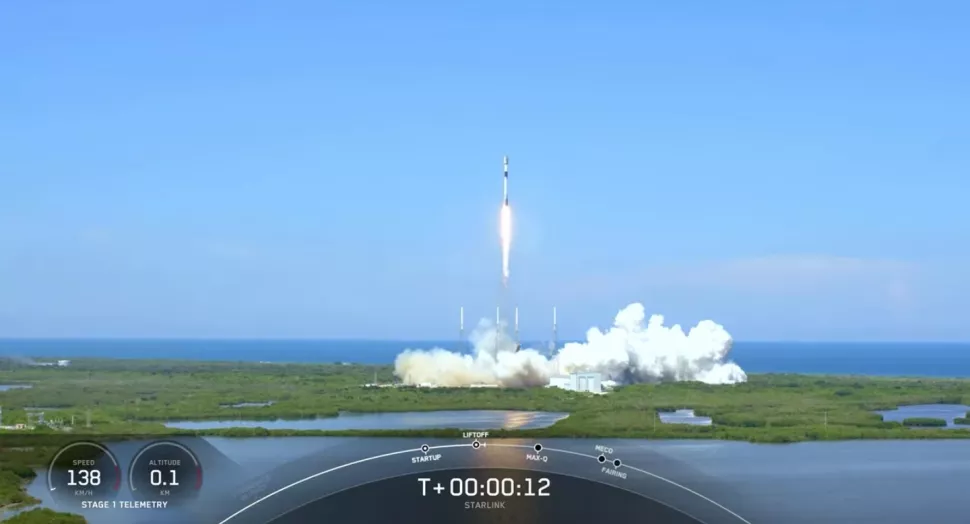When it comes to modern breakthroughs in space travel, SpaceX is one of the most fascinating enterprises. The business, which is never one to let customers down, launched yet another successful deployment of its Starlink satellites from Cape Canaveral on Friday. The launch, which offers improved connectivity to consumers around the world, is the 23rd Starlink mission of the year.
This was SpaceX’s 37th launch of the year and the ninth launch of that particular Falcon 9 first-stage rocket overall. 53 flat-panel satellites from SpaceX were placed in orbit by the launch’s second stage. With its successful deployment, there are now 3,108 Starlink satellites in operation.

The launch took place at the Space Launch Complex 40 (SLC-40) of the Cape Canaveral Space Force Station at 3:21 PM Eastern Daylight Time (EDT) and lasted slightly over 15 minutes. About two and a half minutes after launch, the rocket’s first and second stages separated, and at that point, each stage finished its individual mission-completion procedures. A little more than 15 minutes after launch, the second stage travelled deeper into space to release the Starlink satellite payload.
The first stage, on the other hand, started its post-separation return journey to land successfully on the SpaceX droneship “A Shortfall of Gravitas” in the Atlantic Ocean, off the coast of Florida.
The frequency and track record of SpaceX’s launches are nothing short of remarkable. The corporation has comfortably surpassed 2021’s record of 31 orbital launches in a year with the 37 orbital launches that have been reported so far this year. Following two launches earlier this month, one was conducted yesterday. On August 10, Starlink Group 4-26 was successfully launched from the Kennedy Space Center. The successful deployment of Starlink Group 3-3 from the Vandenberg Space Force Base on August 12 came after that launch. Currently, SpaceX intends to send out two further launch groups on August 28 and August 30 from Kennedy and Vandenberg.
A network of tiny, mass-produced satellites called Starlink is used to connect underserved areas to the internet by communicating with earth-based transceivers. Currently, 39 nations in Europe, North America, and South America have access to the network’s broadband services. Ukraine, which received terminals and access in reaction to the Russian invasion in February 2022, is covered under the list of nations.
Also Read:








